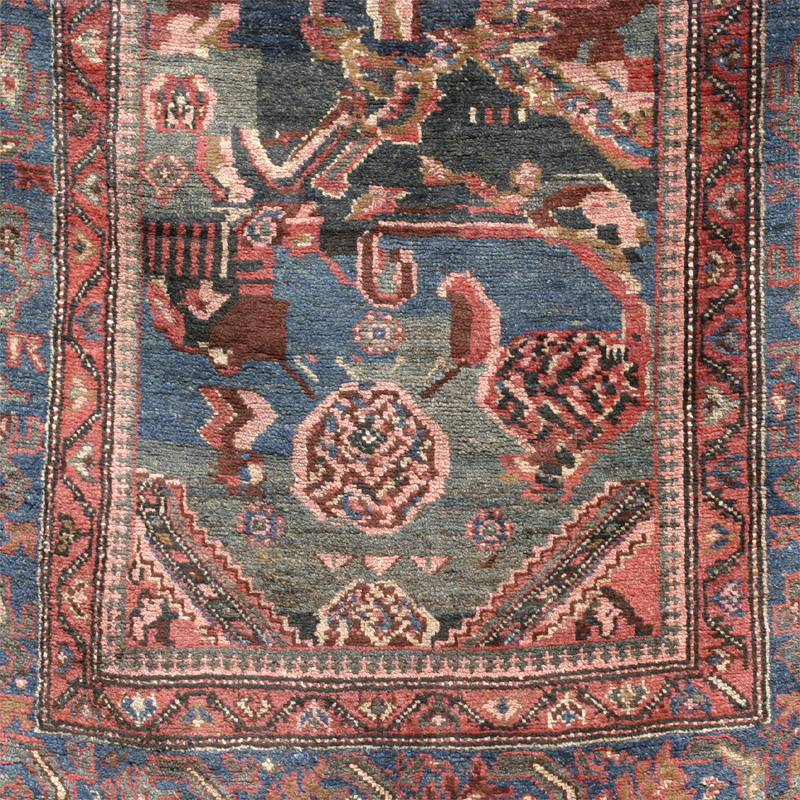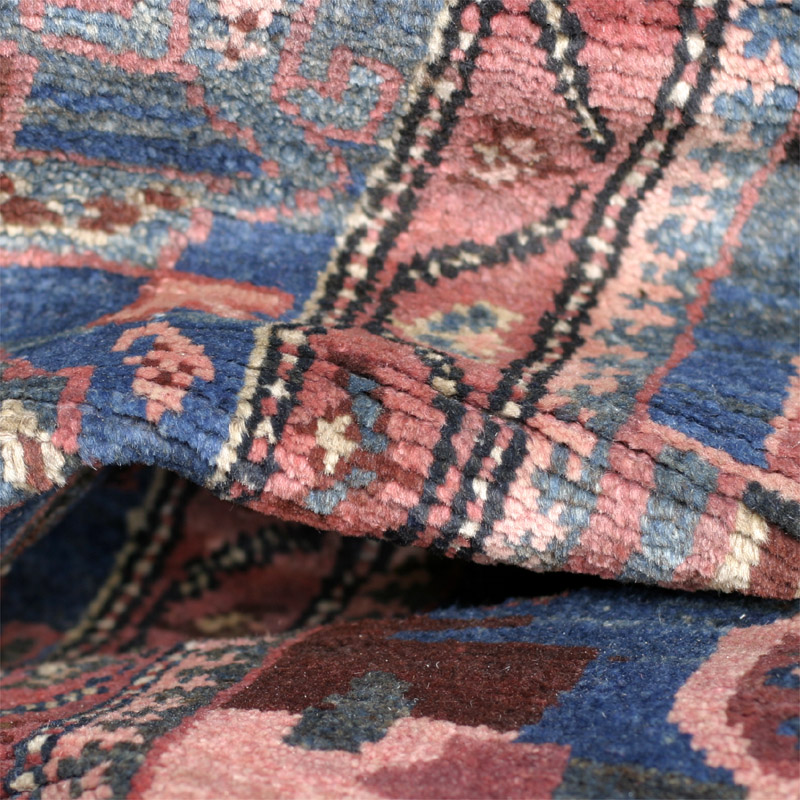The gol farang (also gül farang or gul i farang (Eagleton), Gol-i-Mirza Ali or Gol-I-Frank (Edwards) literally meaning 'foreign flower') design goes back to European demand for French Savonnerie and Aubusson designs during the 19th century. it is fund in different variants in Senneh, Karabagh and Afshar rugs and other origins. Eagleton shows a Kurdish Bijar in similar style and palette (though older and with more figurative elements) as Plate 3 in his seminal book An introduction to Kurdish rugs.
This is a coarse village rendering of the flower design where the roses are hardly still perceived a such. The elements seem to have assumed a life of their own, and some, such as the vertically striped blocks, have been introduced. In some areas one might even be tempted to detect zoomorphic elements. This rendering reflects the European source in a completely transformed manner. Some Karabagh designs have similar flavour.
If the many variants of the gol farang design have anything in common, it is a group of three large flowers (roses) placed on a roundish field that is surrounded by leaves or tendrils (see for example, a Senneh example shown as plate 121 by Edwards). This grouping can still (just) be detected in this rug; however, the three vertical renderings of it are all completely different. It is clear this design was not drawn to a cartoon, but executed freely, in an improvised manner.
The spacious meander main border on a beautifully abrashed mid-blue ground is a particularly attractive feature of this rug.
The rug measures 7ft.4in. x 4ft.1in (224 x 125 cm). While the attribution 'Village Bijar' or 'Gerus Bijar region' for this rug is probably roughly correct geographically (at least going by other published examples by reputable sources such as Eagleton), calling this rug a Bijar may be misleading since this name is commonly associated with a heavy, densely packed and deeply depressed structure, using a fat straight weft and a thin sinuous weft and usually, cotton warps, with knot densities up to 140-170 kpsi. This rug is very different: while it is quite heavy with a substantial, glossy pile, the weave is very coarse 6.v,6.h = ca 36 kpsi, with beige wool warps and brown wool wefts, and it is not depressed as in later Bijars, and flexible in both directions. The structure is therefore quite similar to other north-west Persian village weavings.
The rug has a beautiful palette in which shades of blue-green mix harmoniously with shades of brown-rose, with some straw-yellow highlights. In the traditional gol farang pattern, the difference between the round enclosed space, which is often repeated vertically or with diagonal offset, was formerly marked by the use of a different ground colour; this rug, in line with the disintegration of the pattern, has a range of ground colours—mid-blue, blue-green, a brownish green and a black-blue—which are distributed in areas and change without apparent reason. All have good abrash and seem naturally died. There is no strong red in this rug, the darkest red is a nice abrashed medium rose shade used as secondary border ground colour and in the field designs. In the field, a lighter shade of rose as well as a pale greenish beige are used, together with a light ochre brown that may be derived from walnut husks. Of all colours there is just a mahogany brown that could possibly be synthetic, I am not sure. None of the colours show tip fading and there is no colour bleeding, signs that would indicate aniline dyes.
The rug is in excellent full pile condition, no holes, tears, moth damage etc. About 12 inches of the top-left outer border are repair work, well done and blending in nicely with the rest. The ends are professionally secured, the selvages (wrapped in blue wool) are in good shape with one very minor damage, hardly noticeably and easily repaired.
The rug is quite clean and has no bad odour, though I have not washed it (or got it washed).













